Lush greenery, both inside and out, has become something of a phenomenon. Helen Kontouris’ Botanical planter collection has taken note of the tranquillity, privacy and beauty that can come from plants.
Often it’s the most simple things that end up being the most effective. For Helen Kontouris’ Botanical planter collection, simplicity translates to beauty. And achieving simplicity in design is no easy feat. For Helen, the concept for the Botanical planter was first developed back in 2011, however, it was approximately three years of development for the entire collection to come to life.
Constructed in a combination of lightweight aluminium and stainless steel, each planter has been designed to be able to either stand on its own, or fit into a modular row. Other clever design flourishes ensure the ultimate in flexibility, such as hidden castor wheels and a self-watering function.
Helen shares her inspiration for the range, the fabrication process and how she imagines they might be used.
Helen Kontouris: On beautiful sunny days, you will often find our family with friends at the Melbourne Botanical Gardens. It’s a place where we feel encapsulated by trees and nature and even though it’s so close to the city you somehow feel surprisingly disconnected from the bustling city surrounding you.
Observing the large trees and canopies in the botanical gardens provides secluded outlooks to have a picnic or to read a book and even shelter from rain – this was a defining influence for the Botanical planter screen collection.
We work with a fantastic team of local Australian manufacturers to undertake each stage of the fabrication process. This means all of its varying parts can come together easily and it was very helpful in the development stage as we were able to visit these manufacturers.
The end product, the Botanical collection, is made from stainless steel and aluminium with UV-stable coatings so that it’s able to withstand the harsh Australian elements, whether outdoors or indoors.
The organic sculptural forms are a play on the organic sensibilities of nature. Each style in the collection resembles leaves, with the vascular branches literally allowing the climbing plant to come to life and flourish around the structure.
Another reason I think people have really responded to them is that I find when you’re outside in nature, you can experience the beauty of it and have a sense of relaxation. So then when you’re inside working, creating or entertaining, the Botanical is a natural extension for how we feel when connected to nature.
Our Botanical planter screens are a response to the human need to connect with nature – plants are scientifically proven to accelerate air quality and remove VOC’s, while improving productivity, creativity and wellbeing so they naturally bring the healing power of nature into office environments indoors… and out.
I’d love to see people create new and different ways to use them, however I see them being used as green space dividers in open plan offices, or even homes, as screening and directional way-finding, pool and outdoor entertainment areas screening, green acoustic panels or even to create a thriving vegetable garden in a small space, utilising climbing plants.
We generally work through a process of identifying a need, conducting research, deriving inspiration from our travels along with our vast library of thousands of photographs documented over the years. Then it’s brainstorming, sketching, followed by reduction of the design.
This is a process that is generally repeated over and over. A product like this normally takes about two to three years to get all of the design, manufacturing and production working together cohesively.
INDESIGN is on instagram
Follow @indesignlive
A searchable and comprehensive guide for specifying leading products and their suppliers
Keep up to date with the latest and greatest from our industry BFF's!
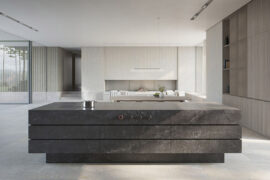
For those who appreciate form as much as function, Gaggenau’s latest induction innovation delivers sculpted precision and effortless flexibility, disappearing seamlessly into the surface when not in use.
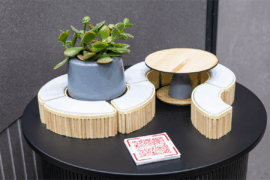
From the spark of an idea on the page to the launch of new pieces in a showroom is a journey every aspiring industrial and furnishing designer imagines making.
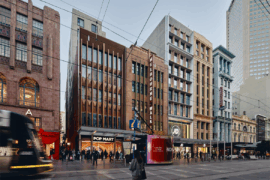
Merging two hotel identities in one landmark development, Hotel Indigo and Holiday Inn Little Collins capture the spirit of Melbourne through Buchan’s narrative-driven design – elevated by GROHE’s signature craftsmanship.

London-based design duo Raw Edges have joined forces with Established & Sons and Tongue & Groove to introduce Wall to Wall – a hand-stained, “living collection” that transforms parquet flooring into a canvas of colour, pattern, and possibility.

Stylecraft opens its new Collins Street showroom, unveiling curated design spaces and Ross Gardam’s Dwell collection.
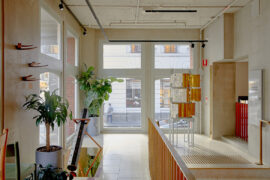
Stylecraft and NGV call for furniture and lighting designs addressing small-space living, with $20,000 prize and commercial development opportunity.
The internet never sleeps! Here's the stuff you might have missed
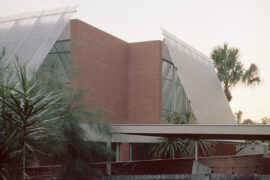
With 26 shortlisted homes, a 13-member jury and four standout winners, the 2025 Habitus House of the Year program wrapped up last night in Sydney with Winnings.
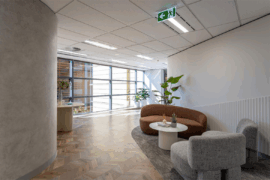
A thoughtful, low-waste redesign by PMG Group in collaboration with Goodman has transformed a dated office into a calm, contemporary workspace featuring a coastal-inspired palette and Milliken flooring for a refined finish.